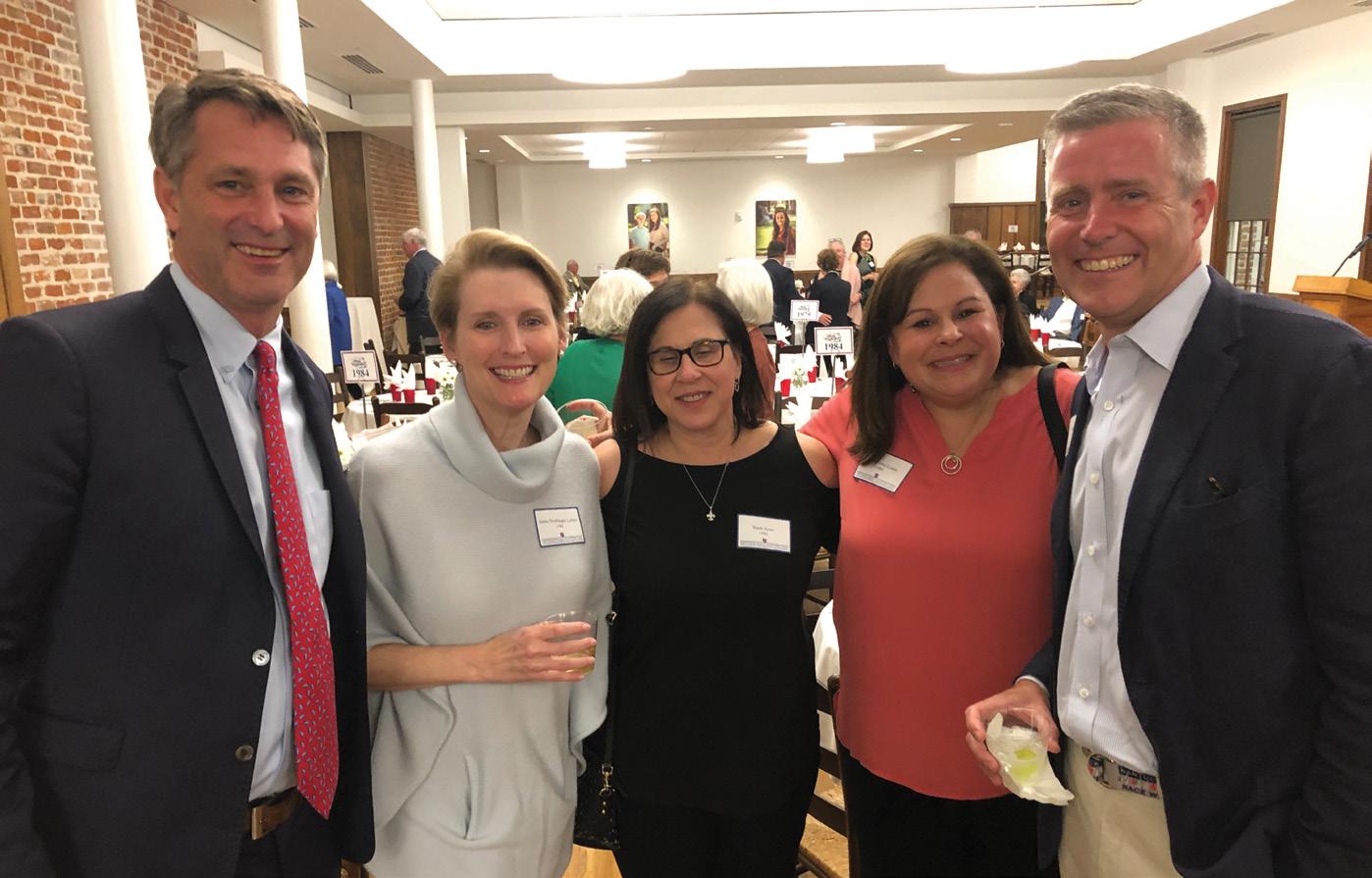
36 minute read
Leadership Takes Form
Leadership takes many forms. From faculty members who serve as department chairs, to 5th graders helping as servers during lower school lunch, each and every role enriches our School’s sense of community and fulfills our mission. Often times, our community reaches beyond our campus to help those in need and heed a call to service. Whether it is students boxing canned goods with Lower School Teacher Mary Beth Plauche at Second Harvest or our Upper School Principal Howard Barton and Chef Mark Uddo rallying our community to assist victims of flooding in Denham Springs or Houston. Our community cares, deeply.
One student-lead activity that exemplifies a true “strength of character,” a trait we cherish and nurture in all our students, is Relay for Life. In 2018, 300 participants, 26 teams, and many Independent School students, joined together to raise over $57,000 towards finding a cure for cancer. Then in 2019, Nicole Roach, the 2018-2019 Chair, lead 300 students on 25 teams to raise $65,000. Besides being consecutive record-breaking fundraising years, what was most impressive was that these events are completely student-lead, student-staffed, and student-supported. Beyond just mobilizing Country Day students, parents, and faculty, the Relay for Life leaders rallied schools, many who had never joined in before, from around the greater New Orleans area.
With this success, one might think the goals of this group had been accomplished. However, after talking with Event Chair and Country Day 2018 Chair Conley Kronenberg, these students have only just begun. h A note from the Chairman, Conley Kronenberg 2018: “Hi, my name is Conley Kronenberg 2018, and if you’re reading this it probably means you have just picked up the latest issue of Comments Magazine. I was honored to serve as chair of Relay for Life for the Greater New Orleans Independent Schools during the 2017-2018 school year. Being chair carried a lot of responsibility, and at times it was extremely stressful, but when the day of the event came, it was worth it all to see how the hard work (yes, it was a lot of hard work) came together and resulted in a great event that benefited so many who battle cancer.”

Other student-led service efforts: SECOND HARVEST FOOD BANK OPERATION DONATION RELAY FOR LIFE
Shinwoo Kim Named 2019 U.S. Presidential Scholar
Shinwoo Kim 2019 was recognized as a member of the 55th Class of U.S. Presidential Scholars. Shinwoo is one of 161 students chosen in the United States and one of two in Louisiana for her broad academic achievements, leadership, personal characteristics, and talents in various fields.
Shinwoo began at Metairie Park Country Day School in 2013 and immediately jumped into activities, athletics, and academic work as a 6th grader. Her interests ranged from performing as the principal cellist in the Greater New Orleans Youth Orchestra to performing in musicals and plays, to giving back to the community through participation in the STEM program called Electric Girls and Second Harvest food bank, to filling her academic time with math, science, English, and language AP courses.
Throughout all these endeavors, Shinwoo's strong leadership skills emerged and she co-founded a club aimed at raising awareness of global issues called Global Citizens: Fight for Freedom, and lead other important clubs as president including, Culture Club, Mathletes, Autism Awareness Club, and PACE (People for Acceptance, Change, and Equity). Shinwoo was able to do all this while maintaining an exceptionally high GPA, playing soccer and cheerleading, and leading her class in student government as first Middle School Executive President, then 9th-grade class president, Community Service Chair, Discipline Committee member and Chair, and as High School Executive Treasurer.
Shinwoo's strong work ethic, impeccable character, and intellect resulted in her induction into Metairie Park Country Day's National Honor Society in 2016, Cum Laude Society in 2018, and was why she ultimately was chosen as a National Merit Finalist and Scholarship Winner and Presidential Scholar. Shinwoo will attend Columbia University in fall 2019.


Cum Laude Society
The Cum Laude Society, the high school equivalent of Phi Beta Kappa, is a national organization founded in 1906. Its primary goal is to recognize and honor superior scholastic achievement. Country Day is limited in the number of junior and senior students elected each year; faculty nominate students based on their superior GPA, good character, honor, and integrity. Faculty members who have received outstanding scholarly recognition are also eligible. Congratulations to this year’s Cum Laude Society members.
SENIORS Esme Benjamin Caroline Conwill Michael Culicchia Scott Freeman Halley Phan Ansley Schwing
JUNIORS Anna Patricia Cutrone Simran Gupta Katherine Hennessy Kate Launey Dorie Le
SENIORS ELECTED LAST YEAR Beverly Caplan Katie Davidson Caroline Fiore Kate Goodwin Shinwoo Kim Nicole Roach
National Honor Society
Fifteen new members of the National Honor Society were inducted this year: Christian Becnel (2019), Caroline Carazo (2019), Halley Phan (2019), Marceline Yu (2019), Jacob Mushatt (2020), Abby Myers (2020), Sydney Wright (2020), Blythe Bouza (2021), Maddie Canter (2021), Kristin Kempton (2021), Caroline Koppel (2021), Grayson Myers (2021), Emma Morton (2021), Lauren Perlis (2021), and Elizabeth Rogers (2021). National Honor Society speaker and mathematics and computer science teacher Dr. Andy Talmadge shared his thoughts on how our students can act as conduits through which the NHS tenets of scholarship, character, leadership, and service can be shared in the world. He concluded his remarks by asking all our students, to “work to strengthen these connections (or conduits) to build a happier more understanding world.”
CLASS OF 2019 Kristian Brooks Beverly Caplan Caroline Conwill Michael Culicchia Colleen Daly Katie Davidson Elizabeth Downs Caroline Fiore Kate Goodwin Shinwoo Kim Logan Landry Nicole Roach Ansley Schwing
CLASS OF 2020 Peter Cannella Anna Patricia Cutrone Simran Gupta Katie Hennessy Ethan Katz Ellie Kelleher Kate Launey Dorie Le Emma Meyer Abby Rosenberg Jacob Mushatt Abby Myers Sydney Wright
NATIONAL HONOR SOCIETY OFFICERS President: Nicole Roach Vice President: Caroline Fiore Secretary: Ethan Katz Faculty Adviser: Ellen H. Cohen FROM THE CLASS OF 2019: Christian Becnel Caroline Carazo Halley Phan Marceline Yu
FROM THE CLASS OF 2021: Blythe Bouza Maddie Canter Kristin Kempton Caroline Koppel Emma Morton Grayson Myers Lauren Perlis Elizabeth Rogers I am Nicole Roach, and I was elected National Honor Society President for the 2018-2019 school year.
Country Day holds each and every student to impressive standards. So why, some may ask, is it necessary to have an organization that recognizes those who go above and beyond? My answer is this: our athletes are recognized for their success on the field, and our performers showcase their talents on stage. Rarely, however, are students publicly commended for the hard work they put into their academics. The National Honor Society acknowledges superlative academics and motivates members to continue to strive for excellence.
Though scholarship is one qualification for membership, the three other criteria are character, leadership, and service. These values overlap rather seamlessly with Country Day’s own mission: to instill strength of intellect and strength of character into students. Thus, in being inducted to the National Honor Society, members prove their position as bona fide Cajuns.
Part of fulfilling the requirements that create both an NHS member and a Cajun means not only shining in the classroom, but also influencing the community. To help our members in fulfilling this task, the officers wish to make National Honor Society more visible than ever before. We, with assistance from our members, hope to organize a Thanksgiving food drive, a holiday toy drive, and a mentorship program with lower school and middle school students. These are just a few of the ways our chapter will attempt to give back to the community that has given us the opportunity to thrive in the first place.
Please join me in congratulating both our new members on their induction and our existing members on their continuous accomplishments. Thank you.
Con nec tio nsTradition that does not evolve becomes stolid and hackneyed; yet a break from tradition divorces us from the past and we wander the universe trying to find our collective identity. By bending tradition we hold on to what is dear and sacred as we move into the future.

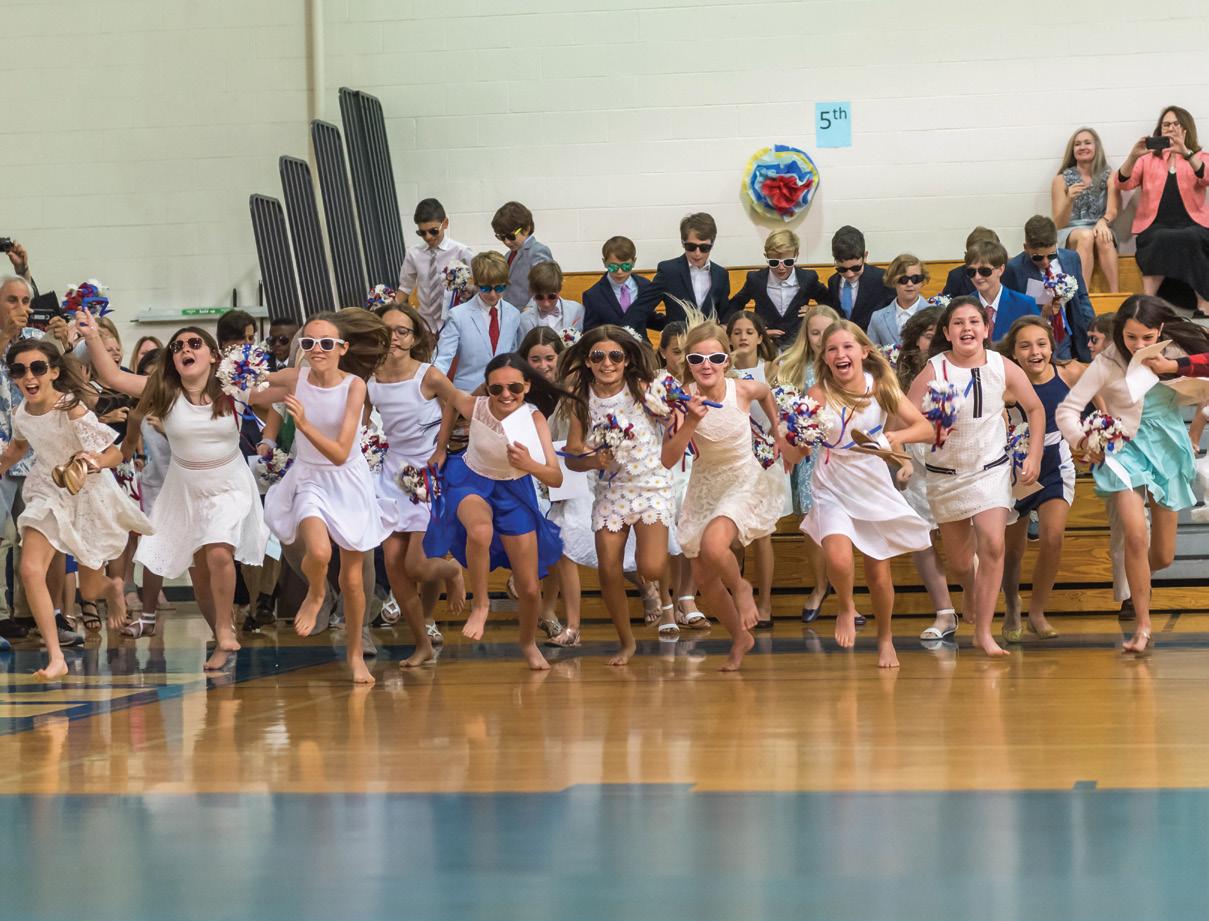



BY HOWARD HUNTER, ACADEMIC DEAN AND HISTORY TEACHER
My friend the Tulane professor Peter Ricchiuti once told me, “Over the decades I have had lots and lots of Country Day alums as undergraduate and graduate students here at Tulane. When they come to my office I can bring them to tears by mentioning ‘little lunch.’ It’s a warm memory held deep in their hearts.” No doubt looking back to the day when one did not suffer the encumbrance of having to forage for your own snacks strikes a mythical cord.
After 35 years at Country Day, I tend to be agnostic about such matters — I don’t eat red beans and rice, I avoid Thursday donuts for obvious reasons; I can’t get wrapped up in the redblue thing, white suits I can take or leave, and I dread one day ringing the bell. But I would never gainsay any of these rituals that spring from the organic stuff of MPCDS DNA. All bespeak an authentic experience of institutional belonging. Over the years we have found that contrived attempts at building community invariably fail. One lead balloon was an All Community Event (ACE Day) when we linked to one another via pipe cleaners and then broke into song. Another disaster had something to do with holding hands around the football field, never a sure way to drum up support from our young adults (whatever). Yet there is magic in tradition; our fifth graders sprinting across Patrick Gymnasium’s floor at closing assembly does more for community than any adult plan can hope for.
Community building is risky business but founding headmaster Ralph Boothby knew it was essential for the survival of the fledging school in 1929. As a civilized man he wanted a civilized place. This could not have been easy. The original constituency of parents included liberal intellectuals, conservative professionals as well as uptown reactionaries. It was a school of Protestants, Catholics, and Jews at a time when institutional divisions between faiths was far more defined. Boothby built community by demanding tolerance and good manners (the art of not hurting the other’s feelings) and this community fostered its share of traditions.
Traditions tend to evolve over a continuum, while practices come and go. While community is in the hardwiring of the School, curriculum is subject to change. In the early years, Boothby was keen on students learning skills that would later be important to family life such as textile arts, cooking and gardening. He thought grades and student ranking as “factious” since motivation should come from within. For Boothby digging a latrine on a camping trip was as an important skill as solving a quadratic equation or conjugating a Latin verb. There was no educational or intellectual hierarchy. It was all about affirming life and being open to possibility. One of the early kindergarten teachers Rose Feingold who was a cultural force in New Orleans talked about how education was all about “attitude instillation,” planting a seed that eventually leads to a self-driven natural curiosity.
Boothby was a member the Harvard class of 1912. They were arguably the first generation of modernists throwing off the bourgeois shackles of the 19th century. The new education was based on Darwinian science and the philosophy and psychology (most colleges had the two in the same department) of John Dewey and William James. There was
also a nod to Rousseau and his educational treatise Emile. Progressive education was really a three-legged stool — individual growth based on a child’s natural development; learning adaptation skills for a rapidly changing world; and educating for a democracy by building community in the school and breaking down walls between the school and society. Boothby knew John Dewey through taking summer courses at Teacher’s College Columbia and he corresponded regularly with William Heard Kilpatrick who took Dewey’s ideas from 30,000 feet and brought them down to ground level. It was Kilpatrick who developed the Project Method at Teacher’s College in 1919, the forerunner of what we now refer to as Project-Based Learning.
Whereas community has been essential to the evolution and even survival of the School (e.g. Katrina) we are also hardwired for experimentation and flexibility. The Progressives emphasized skills over content and over the years we have tried to effect a proper balance by introducing A.P. courses and focusing on our mission of college prep. Nevertheless, we have maintained the tradition of experiential learning in our Lower and Middle Schools by infusing the program with new pedagogies. Upper School teachers are updating the old project method through technology. We have continued the tradition of civic engagement by writing and producing radio programs on New Orleans history and culture on the local NPR affiliate. Like Mr. Boothby, our faculty have been civically engaged by serving on the boards of charter schools and cultural entities like the New Orleans Jazz Festival Foundation, the Tennessee Williams Festival, the Tulane Shakespeare Festival, Le Petit Theatre, the Dickens Festival, the Louisiana Historical Society, the Louisiana Historical Association, the Louisiana Philharmonic, and Longue Vue Gardens. Boothby gave speeches on Progressive Education all over the country. Country Day faculty have given academic papers all over the world and have conducted works shops from Louisiana to Alaska.
With our new Department of Applied Technology (DAT), not only will we expand our computer science curriculum, but DAT will also act as a think tank for linking the Liberal Arts and Sciences. In a sense, we are moving back to the original spirit of combining disciplines through problem solving as well as delving into new frontiers of knowledge. Tradition that does not evolve becomes stolid and hackneyed; yet a break from tradition divorces us from the past and we wander the universe trying to find our collective identity. By bending tradition we hold on to what is dear and sacred as we move into the future. Little Lunch is more than a donut or bag of chips.
Learn more about the Department of Applied Technology on page 23. Read Yes, And… h





National Merit Awards and Scholarship Award
2017-2018 FINALIST Reese Koppel, Darby Le, Logan Stouse, Conor Taliancich
2017-2018 SEMIFINALISTS: John Wisdom
2017-2018 COMMENDED SCHOLAR Spencer Chunn 2018-2019 FINALIST: Shinwoo Kim, Caroline Fiore

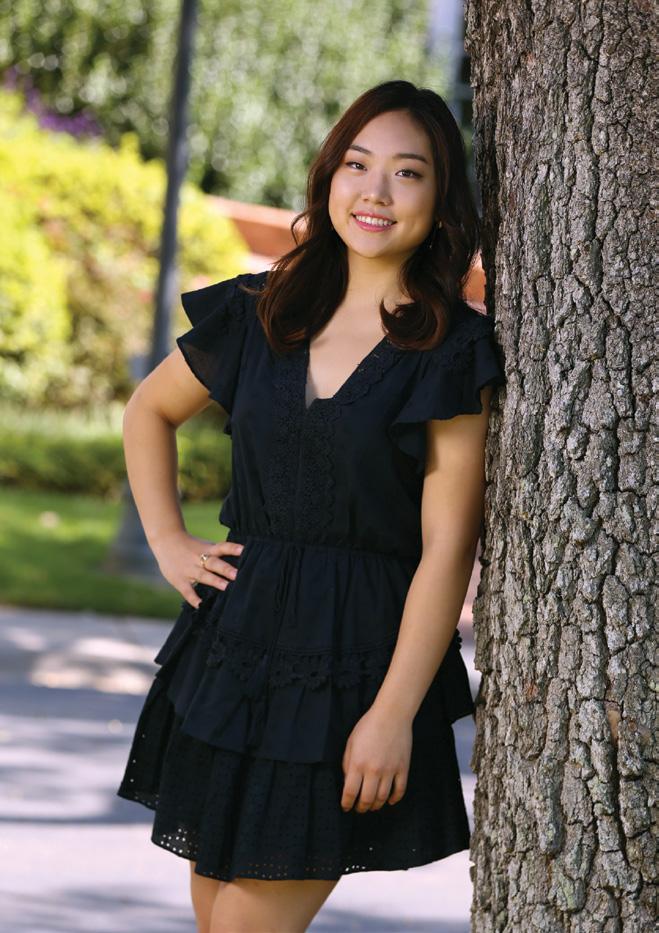
Sue Kim Named 2017 U.S. Presidential Scholar
Country Day senior Sue Kim was selected as a member of the 53rd class of United States Presidential Scholars. Sue was one of only two scholars selected from Louisiana and one of 161 scholars selected nationwide.
Sue moved from Korea to the United States the second semester of her 8th grade year and jumped into school life at Country Day wholeheartedly. As an eighth grader, she took four classes that counted for upper school credit, allowing her to get ahead on requirements. As a senior, Sue was able to take five AP courses, Studio Art, and Statistics. Sue is also musically talented and played the violin in the Greater New Orleans Youth Orchestra.
At Country Day, Sue was a cheerleader her freshman through junior years, and a Student Athletic Trainer all four years of Upper School. Her junior year she received the Yale Award and the Xerox Award (from the University of Rochester). She placed first in State at the Literary Rally in Computer Science and was a member of Mathletes, the Gender Club, the Culture Club, and a club leader of Global Citizens and PACE (People for Acceptance, Change, and Equality). She served as the Sophomore Class Vice President and the Junior Class President. She was nominated by the faculty to serve on the Honor Committee her senior year.
Outside of school, Sue has been a camp counselor at Electric Girls which teaches young girls about engineering, computer science, and electronics. She also has volunteered at Children’s Hospital where she worked with children receiving dialysis treatment.
Sue currently attends Columbia University.
“Several of our graduates are now pursuing computer science degrees or degrees requiring proficiency in programming; they are also spending their summers working for companies such as Facebook, Amazon, and Google; and companies specializing in gaming, virtual reality, and data management.” LINDA LAWRENCE
BY LINDA LAWRENCE, DEPARTMENT OF APPLIED TECHNOLOGY CHAIR, DIRECTOR OF TECHNOLOGY DEVELOPMENT, COMPUTER SCIENCE TEACHER
DEPARTMENT OF APPLIED TECHNOLOGY DAT MISSION The Department of Applied Technology (DAT) is a division of Metairie Park Country Day School that supports the infusion of digital technology into teaching and learning. Using an all-school approach, the department promotes computational thinking by teaching computer science to lower, middle, and upper school students. DAT works with faculty to link disciplines through technology and experiential problem-based learning and reinforces our community's efforts to develop students who think creatively, understand the world in which they live from multiple perspectives, and know how to delve into questions deeply.
A “Yes, and …” brainstorming exercise provided an avenue for members of the Metairie Park Country Day School community to imagine the limitless possibilities of the Lydia Sneed Engineering Lab, which opened in August 2017. “Yes, and …” exercises, frequently used in improv comedy, present a topic that cannot be disregarded, belittled, or negated; rather, participants are challenged to accept the scenario and expand on the idea. Last year, the topic was “The Lydia Sneed Engineering Lab is ready to be used and explored.” Responses included:
“Yes, and for the fall student art show, students will utilize digital technology to transition manual papercuts to artifacts created with the laser cutter and vinyl cutter.”
“Yes, and students in the Upper School math modeling course will apply mathematical modeling techniques to determine optimal seating arrangements for the
Coleman family dining room utilizing tools created on the 3D printer and laser cutter.”
“Yes, and middle school students in math and science will assimilate data and create large-scale infographic prints.”
“Yes, and parents will have Lunch and Learns to understand how our students discover in the Lydia Sneed
Engineering Lab.”
“Yes, and geometry students will collaborate during genius hour using robotics equipment, 3D printers, and the sewing machine.”
“Yes, and history students will extend their research projects to include architecturally significant buildings that they replicated using 3D drawing and printing tools.”
“Yes, and fifth-grade students will research explorers and plot their routes with robots using code and a floor-sized world map.” “Yes, and eighth-grade science students will collect data using Scratch and Finch robots during their “Finding
Speed” unit.”
“Yes, and every Saturday the lab, with its massive white boards, will serve as the gathering place for the top math students in the area to explore and discuss open-ended math problems and techniques while preparing for national math competitions.”
“Yes, and fourth-grade students will expand their computational thinking skills by discovering Snap! with Finch.”
“Yes, and after-school programs will be offered providing opportunities for fifth- through eighth-graders to creatively explore through coding and making.”
“Yes, and first- and second- grade students will program
Finch robots to dance the Transylvania Two-Step and traverse the trails of Golden Fairy Tales.
“Yes, and all sixth- grade middle school students will spend one quarter of their Fridays learning to code and create with littleBits coding kits.”
“Yes, and we will re-engineer the Creative Design
Through Art, Math, and Computer Science course to include every digital equipment offering in the
Engineering Lab.”
“Yes, and we will add AP Computer Science Principles to our elective course offerings for Upper School students.”
“Yes, and in the 2018-2019 academic year, we will create a new department at Country Day that supports the infusion of digital technology into teaching and learning while linking disciplines through technology and experiential problem-based learning.”
Department of Applied Technology
BIG IDEAS
1ENGINEERING LABORATORY Assist all learners in utilizing digital technology to be creative problem solvers
2COMPUTER SCIENCE INSTRUCTION Coordinate and staff computer science instruction PreK-12 3 COMPUTATIONAL THINKING Support vertical and horizontal curriculum infusion
YES, AND…
The Department of Applied Technology was founded through assessing the needs, mindsets, and motivations of our community. Creativity, exploration, the joy of creating with our own minds and hands, and learning from experience are foundational ideals of the progressive school movement often identified with John Dewey and frequently cited when someone asks about the beginnings of Metairie Park Country Day School. Each of these ideals evokes an image of learning that is student-centered and active, though, as Dewey clearly warned, not without a clever pedagogical balance between delivery of knowledge and the incorporation of children’s interests. To that end, the newly minted Department of Applied Technology embarks on six big ideas within its mission.
BIG IDEA 1: ENGINEERING LABORATORY
How might we assist all learners in utilizing digital technology to be creative problem-solvers?
As the center for physical computing at Country Day, the Lydia Sneed Engineering Lab provides tools and inspiration to create almost anything. “We want every student at Country Day to be a problem-solver,” states Emily West, Lower School assistant principal and innovation designer in the Department of Applied Technology (DAT). “Giving them opportunities to fail, try again, and persevere are goals of our new program. Engineering, robotics, and making allow for all of these to happen, and as a result, the students bridge their creativity and innovation.” Spatial reasoning and abstract implementation are fostered through projects that combine programming with physical problem-solving. “Hands-on, minds-on” active learning is encouraged as students solve problems through tangible interaction with robots, 3D printing, computer-aided design and creative programming kits.
BIG IDEA 2: COMPUTER SCIENCE INSTRUCTION
How might we coordinate and staff computer science instruction PreK – 12?
For the past six years, Country Day has had tremendous success with its Upper School computer science offerings. Several of our graduates are now pursuing computer science degrees or degrees requiring proficiency in programming; they are also spending their summers working for companies such as Facebook, Amazon, and Google; and companies specializing in gaming, virtual reality, and data management.
Exposing our students to computational thinking, coding, and computer science concepts enriches problem-solving skills while setting expectations that resulting artifacts will be refined iteratively.
BIG IDEA 3: COMPUTATIONAL THINKING
What is a 21st century education? This question reverberates through academia. Universities such as Harvard, Yale, and Johns Hopkins are experiencing explosive growth within their applied mathematics, computer science, and engineering sciences as well as enrollments in computational and technical literacy within their liberal arts colleges. In preparing our students for success beyond college, Country Day wants our students to understand global perspectives, address the ethical questions, and comprehend technology and its application and how these shape the human experience.
“Digital technology is now ubiquitous in our world,” notes Dr. Andy Talmadge, innovation designer and Middle School computer science instructor, “and preparing students to understand and creatively harness this modern wonder is an appropriate reply. Our work will center on infusing coding and computational thinking into all aspects of teaching and learning so that our creative minds can delve into 21st century issues and ideas.”
BIG IDEA 4: FACULTY SUPPORT
To provide depth and breadth throughout the school’s academic spectrum, the Department of Applied Technology serves as an outreach to our faculty and provides guidance and assistance with integrating curriculum with digital technology.
BIG IDEA 5: MISSION SUPPORT
How might we develop a community that thinks creatively, understands the world, and delves deeply into questions?
“The key word in the naming of our new department is ‘applied,’” states Linda Lawrence, director of technology development and chair of the Department of Applied Technology. “‘Applied’ implies active learning through the use of technology and technical tools. Our challenge is making connections between studies and use, while linking innovations, effects, and impacts to the human experience. Our students learn that it’s OK to be uncomfortable while asking questions and pursuing answers; we’ll also have to nudge our students to go beyond the first or second answer, too.”
BIG IDEA 6: RESEARCH AND DEVELOPMENT
How might we work with our partners to develop real world experiences for PreK – 12 learners?
“The Department of Applied Technology is not just about finding answers through problem-solving,” observes Academic Dean Howard Hunter. “It’s about discovering new realms of knowledge and learning what we don’t know. And through that process we learn to ask questions that expand our intellectual horizons. It’s all about possibility.” 4 FACULTY SUPPORT Work with faculty to link disciplines through technology and experiential learning
5MISSION SUPPORT Develop a community that thinks creatively understands their world and delves deeply into questions 6 RESEARCH & DEVELOPMENT Work with our partners to develop real world experiences for PreK-12 learners


Behind the red door lies a place with boundless energy, unfettered excitement, and enthusiasm for learning: Country Day’s Early Childhood Center. To its many children, families, and teachers, the Early Childhood Center feels like a home. Each morning, the anticipation of a new day is met with warm greetings, teacher hugs, and the joyful uniting of friends. New experiences are plentiful throughout the year, filled with exploration and discovery through the art of “play.” Play is the language of children, and it shows that sometimes “the simplest things are the most important.”
As young as six weeks old, the Sweethearts begin interacting with one another in subtle ways. Sounds are heard, textures felt, and colors are seen in a new environment. Tastes are also acquired as new foods are introduced. Sensory exploration occurs amongst the Sweethearts as they are exposed to paint on their fingers and toes, splashing in water, and as they begin to understand their own mobility. There are many “firsts” in this room: sitting up, rolling front to back, and taking first steps are all ways these children play. The progression from one stage of development to the next flows as seamlessly as does the transition from one classroom to the next.
Transformative new experiences beckon one and two-year-old Butterflies to play. Finding their balance and discovering how things move, stack, and tumble are new and exciting. In keeping with the philosophy of the program, the Dragonfly year offers the opportunity to explore the children’s natural progression and to “meet the children where they are.” Play in this classroom embraces the social and emotional aspects in their development. By the end of the year, Dragonflies are soaring into the threeyear-old world with greater ways to communicate and an increasing awareness of themselves.
The Peppers are the imagination movers of the center. These two and three-year-olds, envision endless possibilities in which to use materials and make connections in pretend play scenarios. Their kind of play involves lively, experimental fun: building tall towers, connecting train tracks, and experimenting with magna tiles. There is much to see, and lots to hear, as little conversations lead to great ideas and new possibilities. Social and emotional development is also rapidly progressing. The play here is organic, child-led, and occurs with even greater independence. There is much to celebrate with the Peppers as they reach milestones and become prideful in their achievements. In the world of a three-year-old, EVERYTHING is exciting, and costumes are always a must.
And finally, the Dinos! These three and four-year-olds put all the pieces together like a giant jigsaw puzzle. They are architects by design, and builders with a strong foundation. Theirs is a collaboration of interactions, negotiations, and acquisitions. The roles of students are clearly defined as each child takes on a task. The social director, problem solvers, and creative doers readily accept the challenge. The social director greets friends as they arrive into the classroom and offers a hug or big smile to welcome everyone. The problem solvers are right there when you need them to help out and the creative doers are testing out new ways to use the classroom materials, inventing their play, as it follows no predictable pattern.
From the moment these young students enter through the red door until the moment they leave for the "big school," our students learn, grow, problem solve, and explore the unique world offered through Country Day's Early Childhood Center.

Early Childhood Classrooms:
SWEETHEARTS 6 week - 1-year-old BUTTERFLY 1-year-old - 2-year-old DRAGONFLY Young 2-year-old
PEPPER Older 2-year-old - 3-year-old DINO Older 3 year old 4 year old
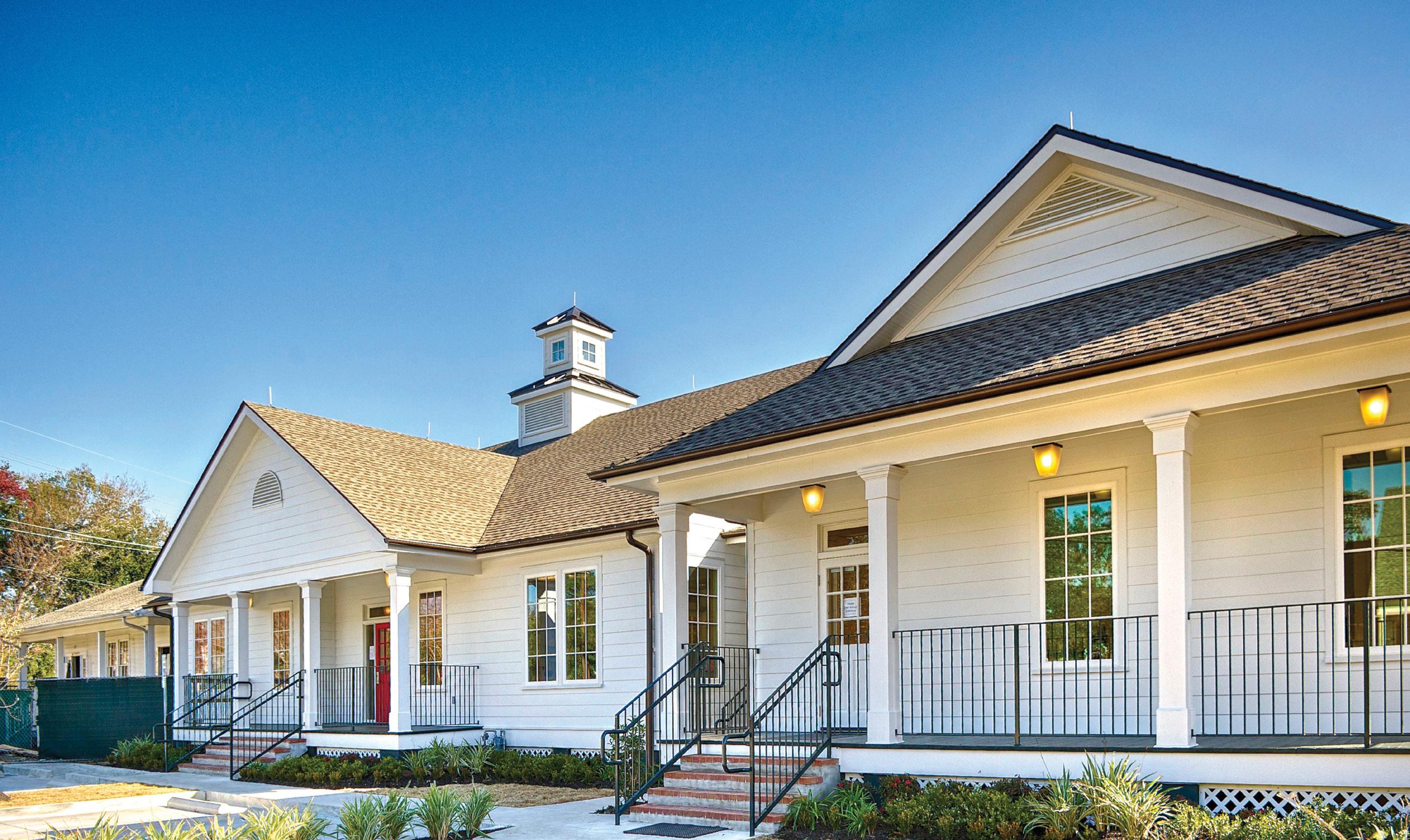

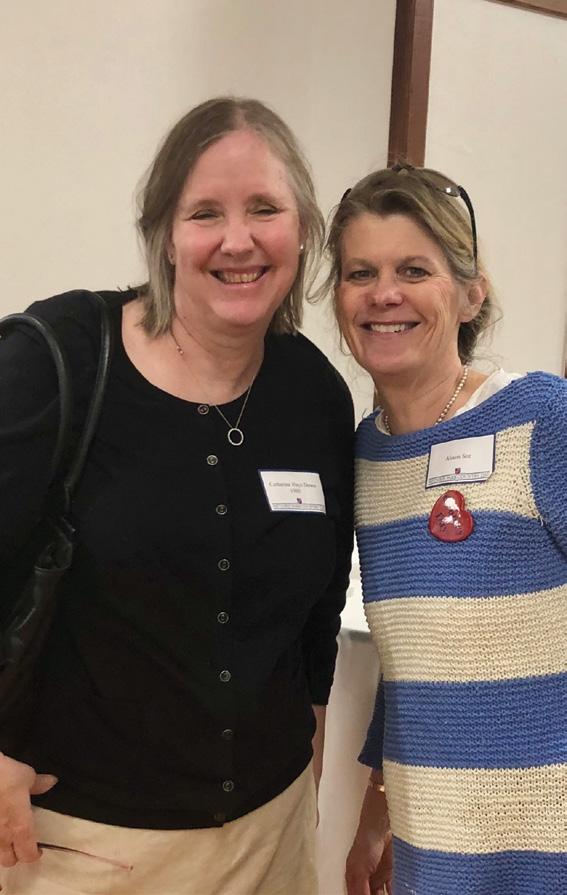
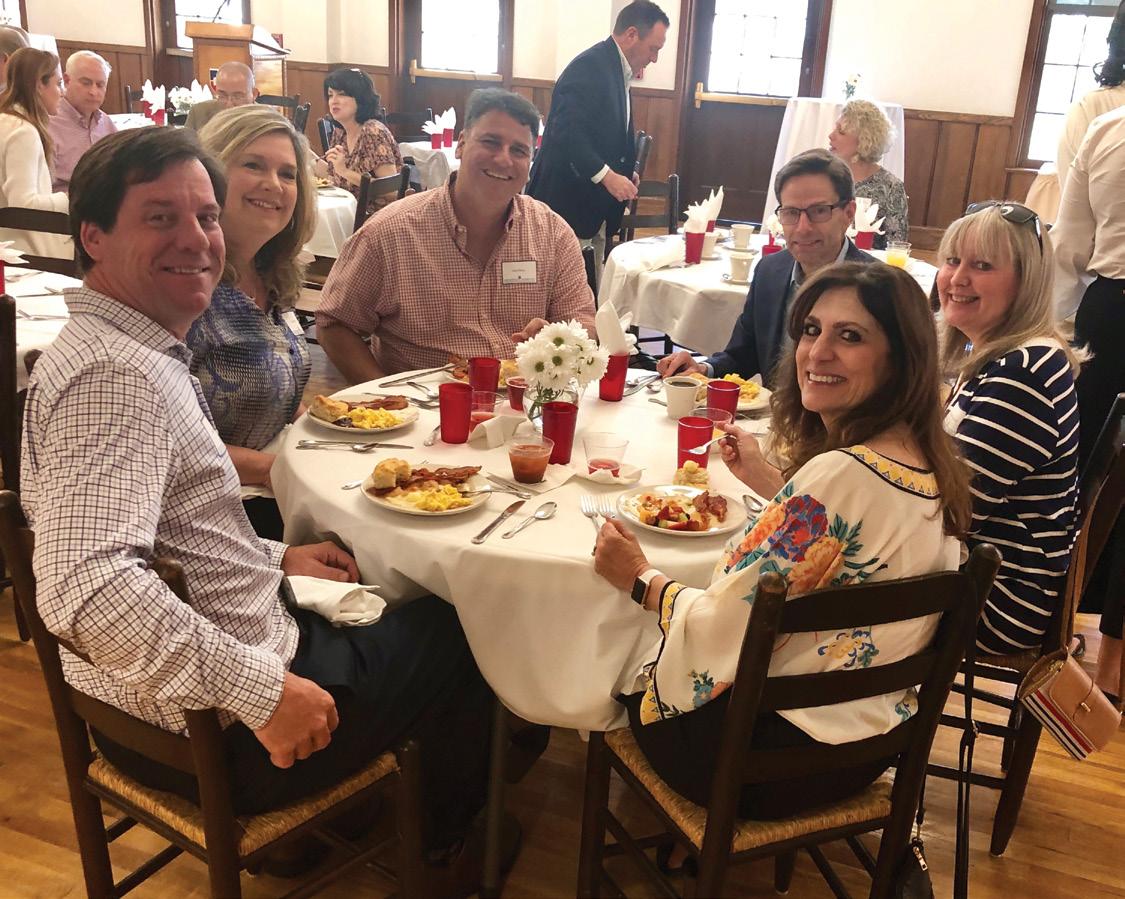

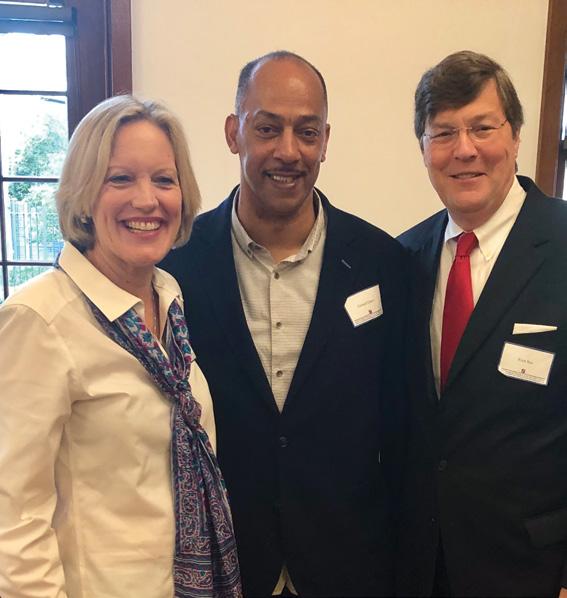
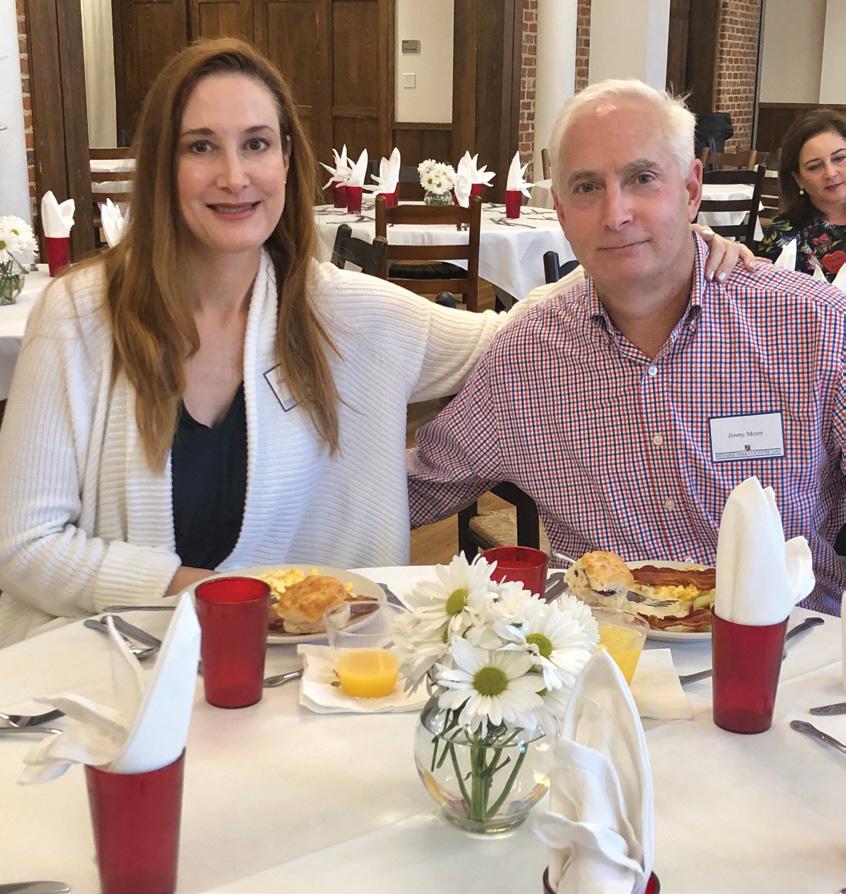
Cajuns Count
Parents of graduates from the class of 2018, 2017, 2016, 2015, and 2014 joined together for a special brunch to reconnect, remember, and reminisce.

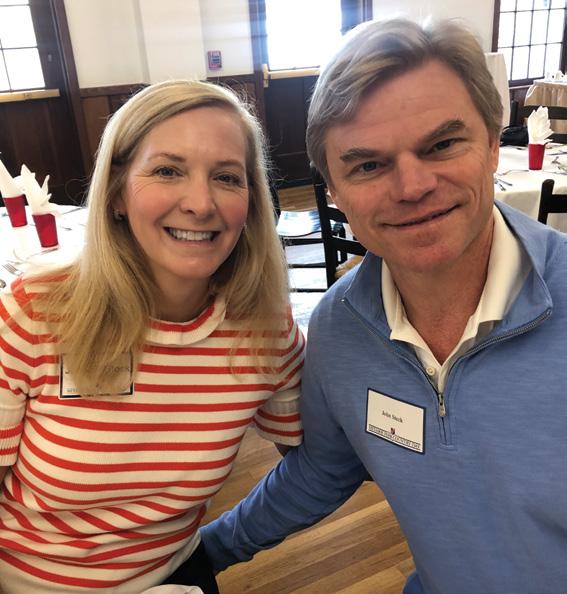


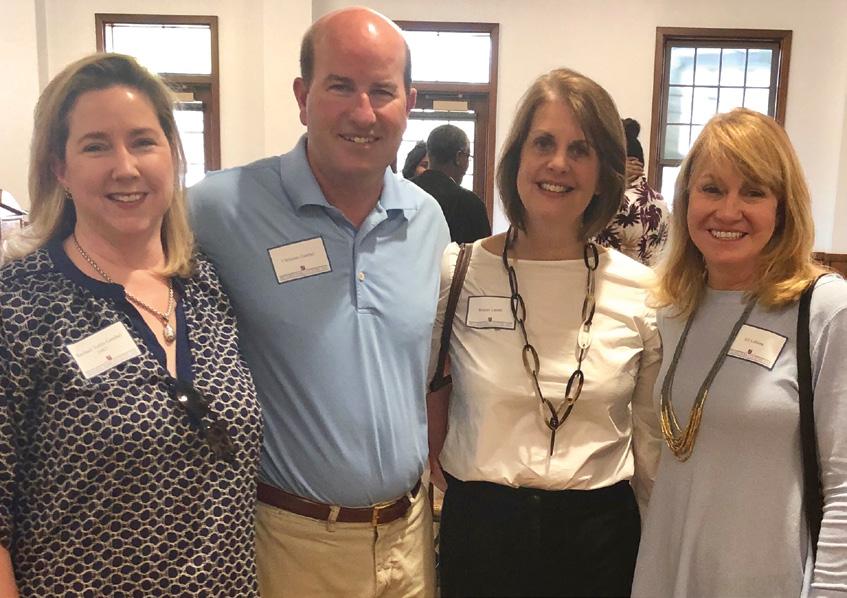



Legacy Lunch
Over 200 alumni grandparents and parents of current students enjoyed Country Day's annual Legacy Lunch this fall.

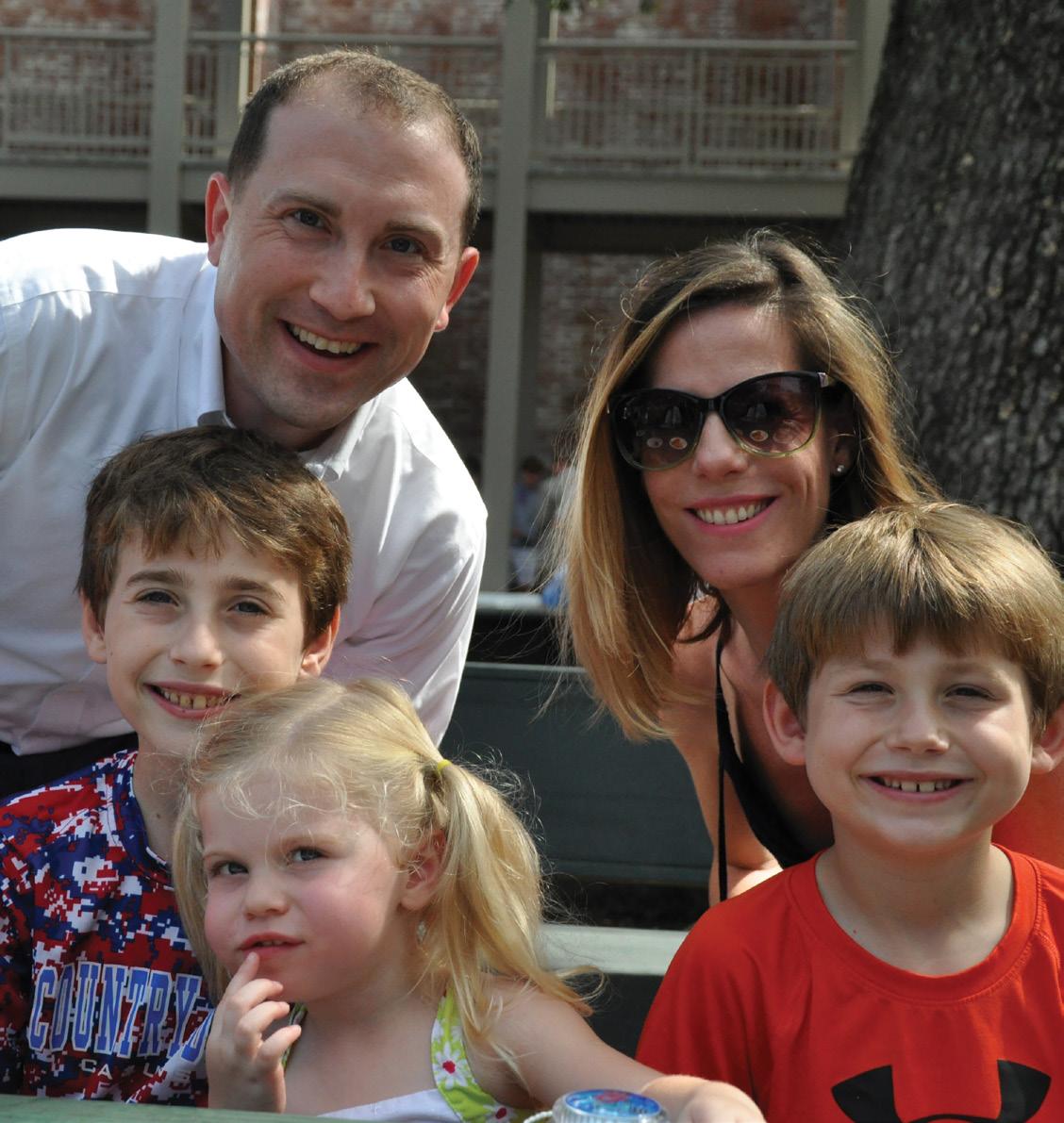

BY BETSY PETERSEN, UPPER SCHOOL ENGLISH TEACHER
“It’s freeing, because you get to let your spirit run without anyone telling you you can’t; it’s a different type of freedom of expression, a sharing of culture and language.” Brice Berger 2018
What kind of world do we live in?
Seniors in Global Humanities address that question in a variety of ways as they study cultural interactions around the world. In the third quarter, for example, they hear about the influence of African culture in lectures by U.S. history teacher Lucas Miller on the Atlantic slave trade and musician and fifth grade teacher Michael Skinkus on AfroCaribbean music, followed by a film, Tootie’s Last Suit, on New Orleans’ own Mardi Gras Indians.
And last year, they got a good look, up close and personal, at what it means to be an Indian, when Big Chief Howard Miller of the Creole Wild West tribe brought a suit to Country Day and talked to them about the many strands of cultural interaction that lead from Africa to New Orleans.
Chief Miller, a family friend of Country Day alumna Brice Berger, talked about the history of the Indians, explaining that the Creole Wild West tribe is the oldest Mardi Gras organization in New Orleans, black or white. He explained that, because runaway slaves sought refuge with local Native American tribes such as the Houma and intermarried with them, African and Indian culture have a long history of mutual influence. Originally, legal restrictions on the lives of AfricanAmericans, both enslaved and free, motivated New Orleans people of color to form secret societies which allowed them to retain and celebrate their culture, including survivals from Africa such as beadwork and call and response chanting.
Indian tribes allowed — and continue to allow — their members to express their identity, Chief Miller told the seniors. “The essence of the indian is an expression of our black self,” he explained in an interview on WWOZ. He told the seniors that he had been “grabbed by the spirit” as a child, drawn to the music, the rhythms, the chanting. Even then, he said, he wanted to be part of something great. And now he considers it a spiritual obligation to hold that culture together and take it farther. That’s why he holds classes to teach sewing, dancing, and chanting, and why he brought pictures of children in Indian suits to show our students.
“The pictures of kids were cool,” said senior Nathan Blancher 2018, and Reese Koppel 2018 found “the mentoring program for kids” the most memorable part of the presentation. Others, like Evie Green 2018, mentioned learning about “the evolution of how it started,” or, as Beau Dupaquier 2018 said, “how it was secret for so long.”
Michael Skinkus had already demonstrated the survivals of west African rhythms in Cuban music, which he called “miraculous” because when Africans were brought to the new world, they brought nothing with them and spoke different West African languages. Tootie’s Last Suit had allowed students unfamiliar with the Indians to see and hear street performances and the months of design and sewing that led up to them. But what impressed students most was to see Chief Miller’s own suit, “seeing it up close and being able to notice all the details,” as Annie Gitter 2018 recalled. Chief Miller explained that it took most of the year leading up to Mardi Gras to make the suit, and that each tribe members designs and sews his own suit and then competes to be the “prettiest.”
For many, Chief Miller provided a glimpse of a world they knew little about. Others, like Brice, know that world well: “It’s freeing, because you get to let your spirit run without anyone telling you you can’t; it’s a different type of freedom of expression, a sharing of culture and language.” h


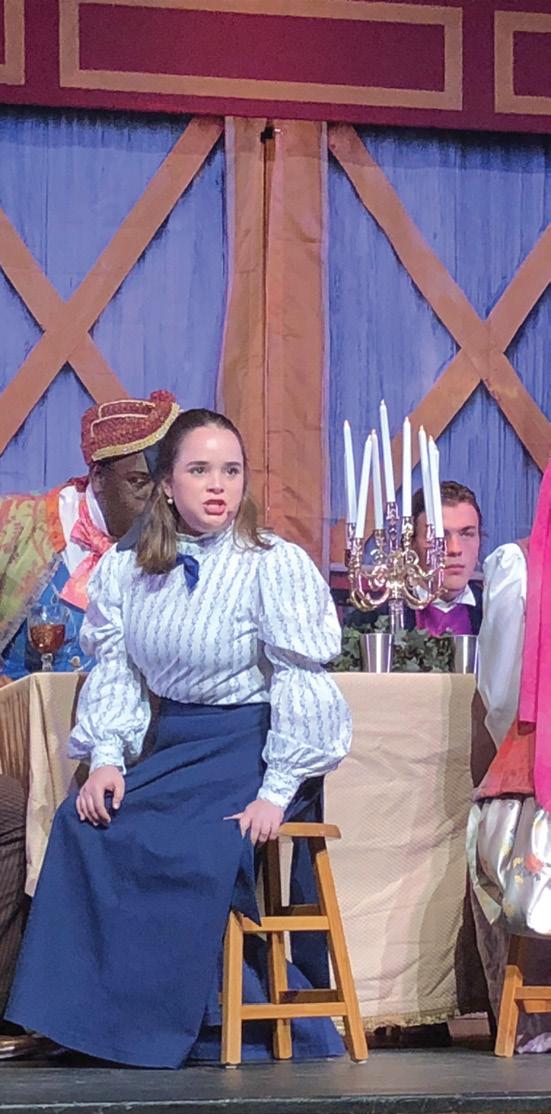
BY SEAN PATTERSON, DRAMA TEACHER
One of the things I love most about my position here at Country Day is selecting material for our Middle and Upper School students to explore on stage. If I plan well, or if I’m lucky, there is some unifying aspect that connects the shows. It might be a thematic connection, such as the theme of transformation that unified our 2014-2015 productions of As You Like It, Into the Woods, and Story Theatre. Our 20152016 shows, Macbeth, Grease, Spoon River Anthology, and the devised production The Poe Project, were connected by a more abstract concept, that of outcasts and the ways they strive for inclusion and acceptance or else reject community altogether. It is not a precise science, this connection-making,
and it occasionally demands some near-Herculean feat of justification to get a particular show to fit. The relatively lightweight Grease, for example, becomes so much more interesting when you see the supposed “cool kids” as more of a band of misfits who’ve formed their own supportive community and now have to decide whether to welcome a newcomer into their circle. Whatever the association, when I can align the shows in a satisfying way, the relationship between those shows undeniably helps me guide instruction from grade to grade and across the divisions. It also helps me teach lessons greater than the shows themselves, things I hope the students can take with them even if they never set another foot on a stage.
My understanding of this link between the shows changes and evolves as I plan. Most often, I start my process by picking the shows for the Upper School. I usually choose the Shakespeare production first. I also consider the students who will likely be involved, to make sure there are exciting opportunities for them. For our 2017-2018 season, for example, I began with Hamlet, a challenging show with a slew of terrific roles. For the musical, I had my heart set on The Mystery of Edwin Drood, a fantastic, clever, musical murder mystery that invites the audience to vote on the solution, resulting in a different ending for every performance. Like Hamlet, it’s a show that demands a lot of its performers; and as both shows involve characters trying to catch a murderer, they seemed to fit well together.
For the Middle School presentations, however, I have different factors to consider. All 6th graders take Drama, while 7th and 8th graders may take it as an elective. Beginning in the 2018-2019 academic year, my 6th grade classes were split into semesters, with half the grade taking Drama in the
fall and the other half in the spring. This meant choosing two shows for 6th grade, as well as a show for the 7th and 8th grade. For the 6th grade, I wanted shows that had relatively equal weight, with content worth exploring over a semester and plenty of characters to give every student a nice chunk to do. Since the fall performance was scheduled for early December, A Christmas Carol seemed like a worthwhile choice; and Alice’s Adventures in Wonderland felt like a worthy complement to it for the spring. Both shows feature main characters who take unusual journeys, which led me to The Wind in the Willows, a show I’ve considered for a few years, as the choice for 7th and 8th grade Drama. While it’s a bit quaint nowadays, The Wind in the Willows is witty and heartfelt, and its anthropomorphized characters offer a wonderful opportunity for young actors to develop their skills.
Then I began looking for connections between the fiendish mysteries of the Upper School and these fantastical journeys in the Middle School. For instance, the shows all feature heightened language, theatrical dialogue that is in some way exaggerated, poetic, or otherwise non-naturalistic. They are
“The process of selecting those last two adaptations actually foreshadows the real lesson of the season and the school year for me. While the link that ultimately
also all period pieces or pieces set in a time period other than right now in the 21st century. They’re all tied to England in some way, either by setting (Drood, Christmas Carol, Alice in Wonderland, Wind in the Willows) or by origin (Hamlet). And, of course, they are all adaptations.
Adaptation is the process of taking source material from one medium and re-envisioning or reinterpreting that material for another medium. Shakespeare adapted Hamlet from a Scandinavian legend popularized by another Elizabethan play which is now lost to us, and I adapted it even further by whittling it down from its four-hour length to a more manageable two-hour version. Charles Dickens
died before he completed his final novel The Mystery of Edwin Drood, which not only influenced composer Rupert Holmes to consider it as source material for a musical but also inspired the musical’s intriguing structure and multiple endings. There are numerous adaptations of Dickens’s A Christmas Carol; the Royal Shakespeare Company version I chose was extraordinarily faithful to the original text, with much of the language taken directly from the novel. I couldn’t find a similarly faithful adaptation of Lewis Carroll’s Alice’s Adventures in Wonderland, so I wrote my own, employing Carroll’s language almost exclusively in both dialogue and narration. I’d been drawn to a beautiful adaptation of Kenneth Grahame’s The Wind in the Willows by playwright Alan Bennett; but when the performance rights proved difficult to obtain, I found a more freewheeling version in the spirit of British panto, a performance style similar to vaudeville that I thought would be a lot of fun for the students to experiment with and explore.
The process of selecting those last two adaptations actually foreshadows the real lesson of that production season and school year for me: adaptability. In theatre, we’re forever making and remaking plans, trying out different options, collaborating and compromising. Theatre is a discipline which requires flexibility and resilience. Problems that arise in the theatre almost universally require creative solutions, with the daunting question of, “How on earth are we going to do that?” being met with a brave, “Well, what would happen if we try this?”
Every production has some complication that must be sorted out. What happens when an actor is too sick to perform? What do we do when we can’t line up a costumer? How do we rehearse a show that’s half-improvised and
depends on audience interaction? How do we pull off a production when we only have 80 minutes a week and there’s barely enough time for the students to learn the lines? There’s always something to solve, and the solutions come from being flexible, resourceful, and adaptable.
Even in the 2018-2019 school year, each show presented challenges. For Love’s Labour’s Lost, we had to adjust our performance schedule and replace two actors on short notice. With Mamma Mia, we had to find ways to do the show with fewer guys than we really needed. In 6th grade, we experimented with performing a program of poetry rather than a full-length play; and in the 7th & 8th grade, we explored letting the students do it all, from playwriting and acting to designing and directing in a series of original one-act plays they conceived from one-word concepts. (Unifying theme: Idea and inspiration.)
No matter the challenge, the show must go on so we have to get creative. We face the challenges. We take risks. We try something new. We adapt.
connected all those shows was adaptation, what they really brought home for me—and what I hope I passed on to our students—was the importance of adaptability.”


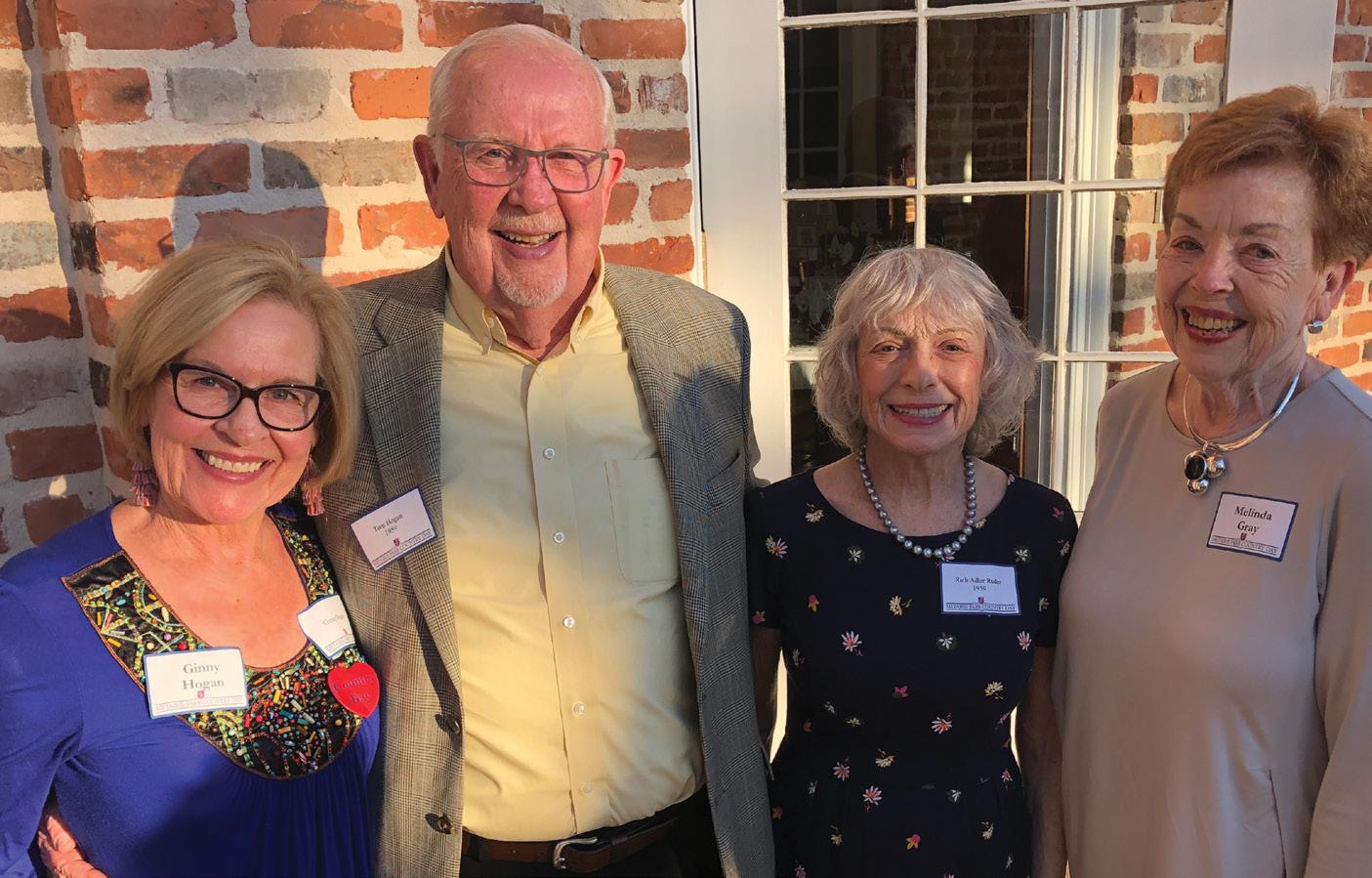

Boothby Dinner
Members of the class of 1939 through the class of 1994 enjoyed an evening of fun and friends at the annual dinner named after Country Day's headmaster.
